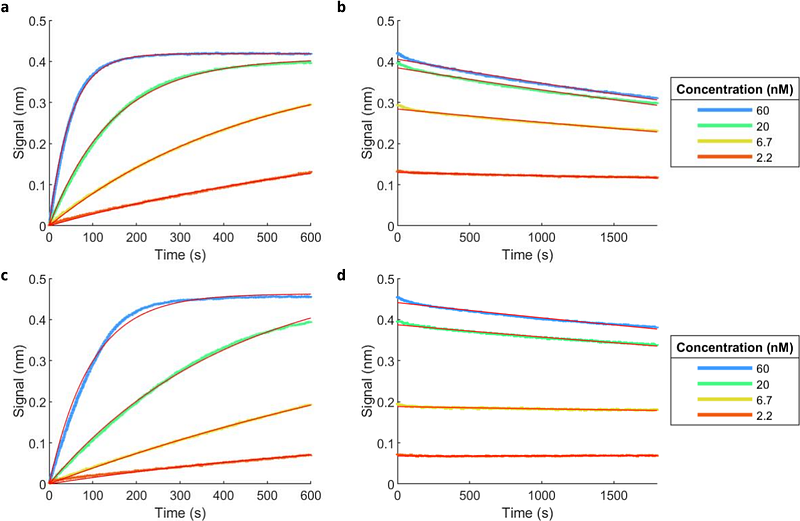A biosensor-based phage display selection method for automated, high-throughput Nanobody discovery

A biosensor-based phage display selection method for automated, high-throughput Nanobody discovery
De Keyser, P.; Kalichuk, V.; Zogg, T.; Wohlkonig, A.; Schenck, S.; Brunner, J.; Pardon, E.; Steyaert, J.
AbstractBiopanning methods to select target-specific Nanobodies(R) (Nbs) involve presenting the antigen, immobilized on plastic plates or magnetic beads, to Nb libraries displayed on phage. Most routines are operator-dependent, labor-intensive and often material- and time-consuming. Here we validate an improved panning strategy that uses biosensors to present the antigen to phage-displayed Nbs in a well. The use of automated Octet biolayer interferometry sensors (Sartorius) enables high throughput and precise control over each step. By playing with association and dissociation times and buffer composition, one can efficiently decrease the background of aspecific and low-affinity Nbs, reducing the rounds of panning needed for the enrichment of high-affinity binders. Octet panning also enables the use of unpurified target proteins and unpurified phage from a bacterial culture supernatant. Additionally, downscaling to a 384-well format significantly reduces the amount of protein required. Moreover, enrichment of binders can be quantified by monitoring phage binding to the target by interferometry, omitting additional phage titration steps. Routinely, up to 3 rounds of Octet panning can be performed in only 5 days to deliver target-specific binders, ready for screening and characterization using the same Octet instrument.


